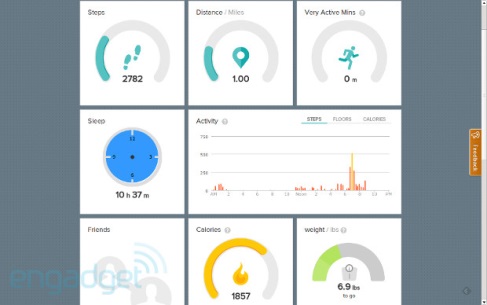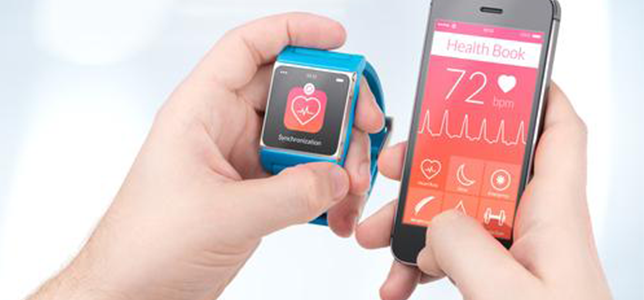One of the most widely discussed trends that has emerged within the medical device industry is the development of wellness and health-focused wearable devices and mobile health applications. These devices and related apps, often grouped under the term mHealth, can perform a wide range of functions that are becoming increasingly important to users. These include tracking daily exercise, recording food intake, monitoring vital signs, and delivering critical data to healthcare practitioners who may be providing remote diagnosis and treatment, or to researchers who are conducting clinical studies. Many of the newest mHealth products are wearable, providing the user with a convenient platform with which to quickly view information and download that information to other cloud-connected devices and social media. With the increasing development of wearables that are not only informative but also communicate a premium level of brand quality, it’s doubtful that this trend is a fad that will eventually fade away. There is simply too much data-gathering power appearing on users’ wrists. The growth in wearable devices and mHealth applications will surely lead to disruptive, innovative and out-of-the-box thinking that will ultimately transform the healthcare industry.
Some of the world’s largest technology companies - Apple, Samsung, Google, Sony, and Lenovo - have already introduced products and apps to the ever-expanding wearable mHealth market. Devices such as the Apple Watch, the Misfit Shine, and the Fitbit have the ability to track distance walked or run, measure calories burned, monitor sleep, measure blood pressure, and more. But an exciting addition to these so-called fitness trackers are several wearables that are directly involved with informing healthcare decisions. These products include Embrace (monitors epileptic seizures), the Neumitra biowatch (measures and manages brain health), and Imec’s smart ECG necklace (aimed at detecting heart arrhythmias). The Embrace device measures physiological signals such as sleep patterns, physical activity, and stress levels. But what sets Embrace apart from a wearable like Fitbit, is that it goes one step further by being associated with a specific disease - epilepsy. The company making the Embrace product states it can detect seizures and can therefore save the lives of people suffering from epilepsy. The FDA considers their marketing verbiage a “claim,” indicating that the device treats or diagnoses a chronic disease or condition. And this claim is exactly why the FDA is particularly interested in a device like Embrace as opposed to a device like the Fitbit.
The FDA recently released a draft guidance entitled “General Wellness: Policy for Low Risk Devices” that carefully outlines its new policy on assessing wellness products and how that assessment is determined by its definitions of “general wellness” and “low risk.” These products can include video games, software programs, exercise equipment, and audio recordings. The FDA, matching its policies to the rising interests in wellness products, has come up with a specific formula that companies can use to figure out whether or not their product qualifies as a general wellness, low risk device.
Categorizing General Wellness
The FDA has defined overall general wellness products as those that are intended to promote or maintain general wellness, and those that present minimal or low risk to user safety. The FDA has defined the parameters of general wellness products as fitting into one of two possible categories:
(1) An intended use that relates to maintaining or encouraging a general state of health or a healthy activity
AND/OR
(2) An intended use claim that associates the role of healthy lifestyle with helping to reduce the risk or impact of certain chronic diseases or conditions and where it is well understood and accepted that healthy lifestyle choices may play an important role in health outcomes for the disease or condition.
The big difference between the two is that one singularly relates to overall general wellness, whereas the other relates in some way to a specific chronic disease or disorder. In the first category, the “general state of health or healthy activity” includes physical fitness, weight management, relaxation or stress management, mental acuity, self-esteem (for example, a device that has a cosmetic function only making claims to impact self-esteem), sleep management, or sexual function. Products like the Fitbit clearly encourage physical fitness by motivating owners of the wearable to alter physical activity in some way. Fitbit also tracks calories burned, maintains weight management, and tracks sleeping patterns, which all fall into this first category. Products that claim to treat, diagnose, or restore structure/function impaired due to a disease, do not fall into this category.

For the second disease-related category, devices are further categorized into one of these two subcategories:
(1) Intended uses to promote, track, and/or encourage choice(s), which, as part of a healthy lifestyle, may help to reduce the risk of certain chronic diseases or conditions.
AND
(2) Intended uses to promote, track, and/or encourage choice(s) which, as part of a healthy lifestyle, may help living well with certain chronic diseases or conditions.
Neither category claims that the promotion or encouragement of certain choices will absolutely affect a certain chronic disease or condition. Instead, they say that they “may” or can potentially affect a disease or condition. The single difference between these two categories is that the first speaks to a person who does not already have the mentioned chronic disease or condition, whereas the second speaks to a person who already has the chronic disease or condition. For example, a product that falls into the first category can promote physical activity, which, as part of a healthy lifestyle, may help lower the risk of high blood pressure. A product that falls into the second category can track caloric intake and help maintain a healthy weight. Healthy weight may help living well with high blood pressure.
It is very important that these disease-related general wellness claims come from a deep understanding and general acceptance that the product does indeed lower risks or has an impact on the chronic disease or condition mentioned. This “proof” can originate from science journal publications, for example. The guidance particularly points out several diseases that the product may claim to lower risks for or have an impact on; high blood pressure, type 2 diabetes, and heart disease. For example, by providing calorie and exercise tracking - both of which can help support a healthier lifestyle - it’s clear that Fitbit can reduce the health risks for users living with these conditions.
What constitutes “low risk”?
If the product falls into the first and/or second categories of “general wellness” within the FDA draft guidance, there is an additional "low risk" criterion the device must meet before qualifying as a general wellness product. If the product is in some way invasive, involves an intervention or technology that may pose a risk to a user’s safety if controls are not provided (risk from lasers, radiation exposure, or implants), raises new questions about usability, OR raises questions of biocompatibility, the device is NOT low risk. To illustrate this, the guidance uses as an example a product that is intended to mechanically exfoliate the face, hands, and feet to make the skin smoother and softer. Since this product’s claim does not refer to a specific disease or medical condition, but instead addresses self-esteem, it can be considered a general wellness product. But is the product low risk? The answer is yes, because the product only exfoliates the face and is not considered “invasive” since it does not penetrate the outermost layer of the skin. However, if the product were to deliver a chemical that entered through that layer of skin, then it would be considered invasive and therefore would not be low risk.
Encouraging the Wearable Trend
Throughout the FDA draft guidance, words like “intended use” and “claims” stand out as possible ways to make or break a device in terms of whether it will be considered as a general wellness device by the FDA. Manufacturers must carefully consider their messaging when developing marketing initiatives for their wearable health device and related mobile health apps. It’s essential that companies don’t overstate their product’s capabilities and instead use this draft guidance as a tool that will help get new mHealth products to market. As the wearable technology category explodes with new products and technologies, the consumer healthcare field can profoundly benefit from the development of devices like Embrace and other disease-related devices that can potentially save lives and help people living with certain medical conditions maintain a healthier lifestyle.
